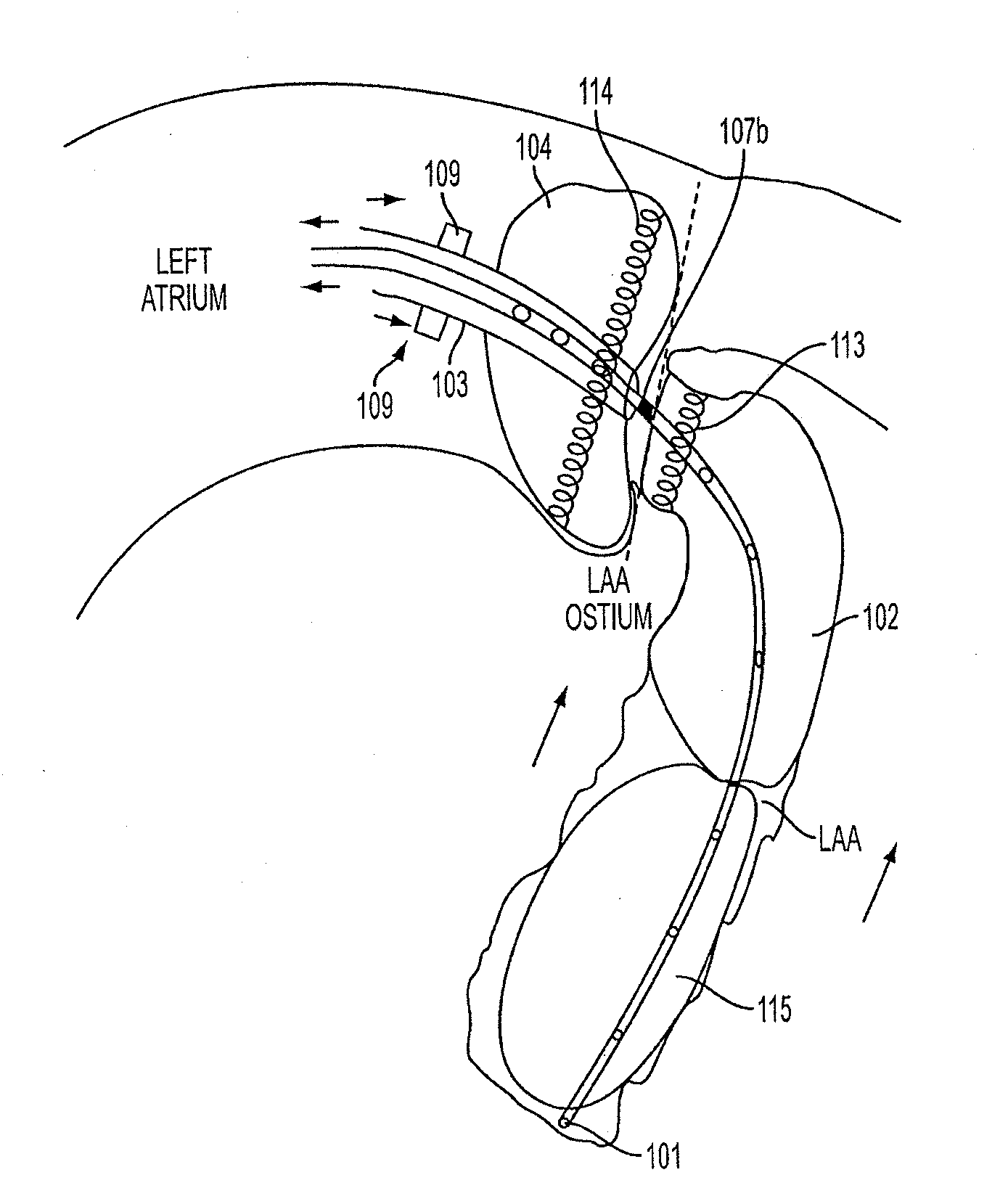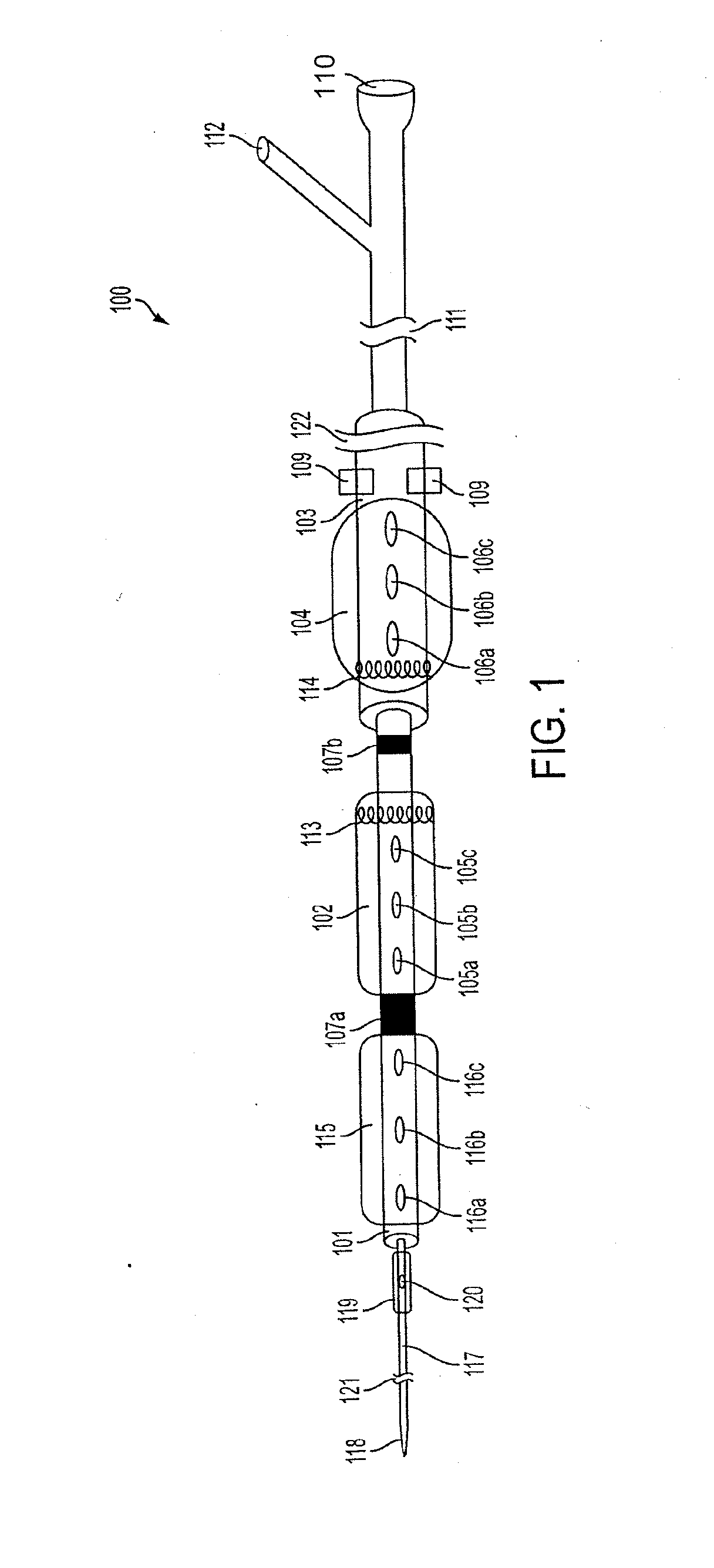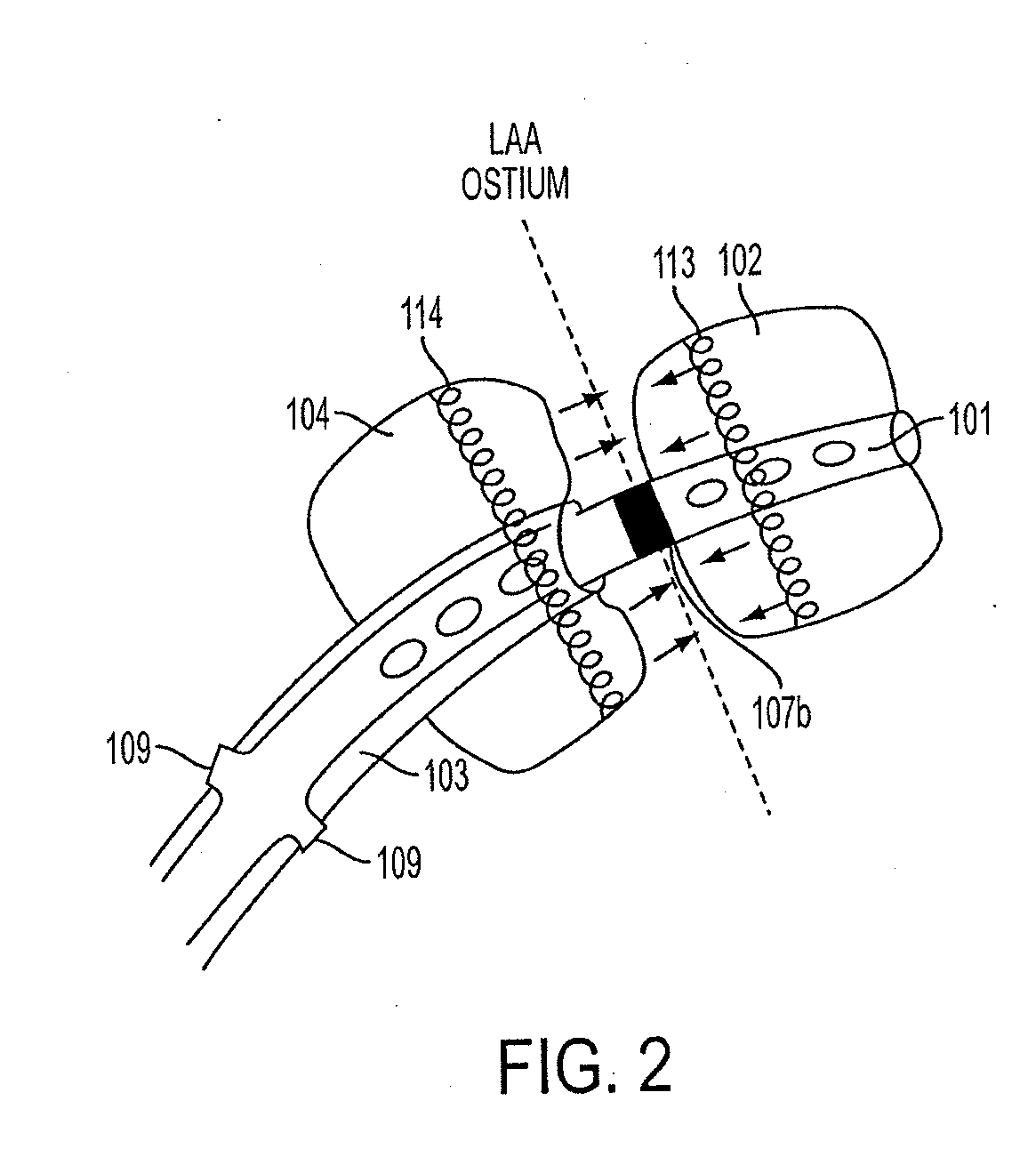Methods and systems for preventing bleeding from the left atrial appendage
a technology of atrial appendage and preventing bleeding, applied in the field of medical devices and medical methods, can solve the problems of insufficient circulatory ex watchman device is the incomplete occlusion of the laa, and gaps are more likely to enlarge, so as to improve the adhesion of the balloon surface, prevent the dislodging of circumferential tie or constriction, and increase the effectiveness of preventing bleeding
- Summary
- Abstract
- Description
- Claims
- Application Information
AI Technical Summary
Benefits of technology
Problems solved by technology
Method used
Image
Examples
Embodiment Construction
[0124]FIG. 1 is a perspective view of an exemplary embodiment of a catheter 100, which is part of aspects of the present disclosure's system for accessing a pericardial space and preventing strokes arising from the LAA. The present disclosure's system also includes closure device 1300, as shown in the exemplary embodiment of FIG. 13. FIG. 1 shows a stand-alone catheter 100 before it is introduced into a body cavity and thus, FIG. 1 shows inflatable balloons 102, 104, 115 and 119 in their un-inflated form. Inflatable balloon 104 is attached to an outer sheath 103. Inflatable balloons 102 and 115 are attached to inner sheath 101. Inflatable balloon 119 is attached to inner catheter 117. Depending on the desired degree of compliance, inflatable balloons 102, 104, 115 and 119 can be made of rubber, latex, polyisoprene, silicone, polyurethane, or any combination thereof. Rubber, latex, polyisoprene, and silicone produce more compliant inflatable balloons. Polyurethane produces non-compli...
PUM
| Property | Measurement | Unit |
|---|---|---|
| suction force | aaaaa | aaaaa |
| pressure | aaaaa | aaaaa |
| shape | aaaaa | aaaaa |
Abstract
Description
Claims
Application Information
 Login to View More
Login to View More - R&D
- Intellectual Property
- Life Sciences
- Materials
- Tech Scout
- Unparalleled Data Quality
- Higher Quality Content
- 60% Fewer Hallucinations
Browse by: Latest US Patents, China's latest patents, Technical Efficacy Thesaurus, Application Domain, Technology Topic, Popular Technical Reports.
© 2025 PatSnap. All rights reserved.Legal|Privacy policy|Modern Slavery Act Transparency Statement|Sitemap|About US| Contact US: help@patsnap.com



